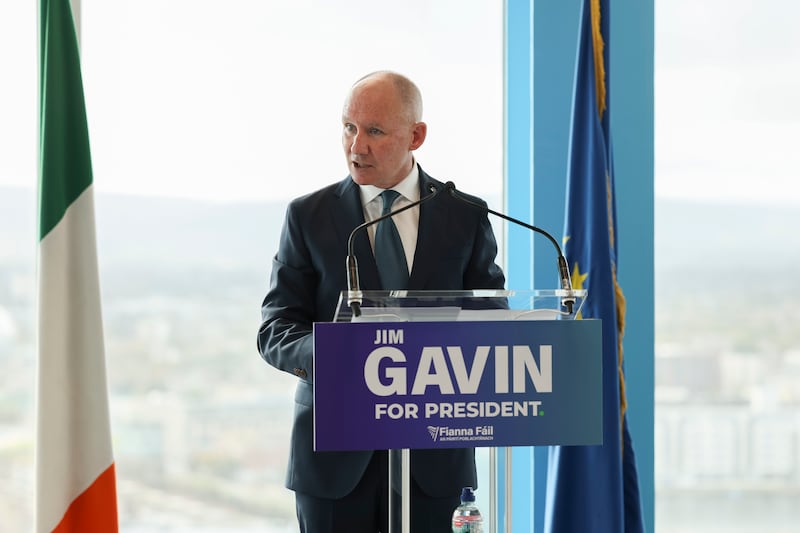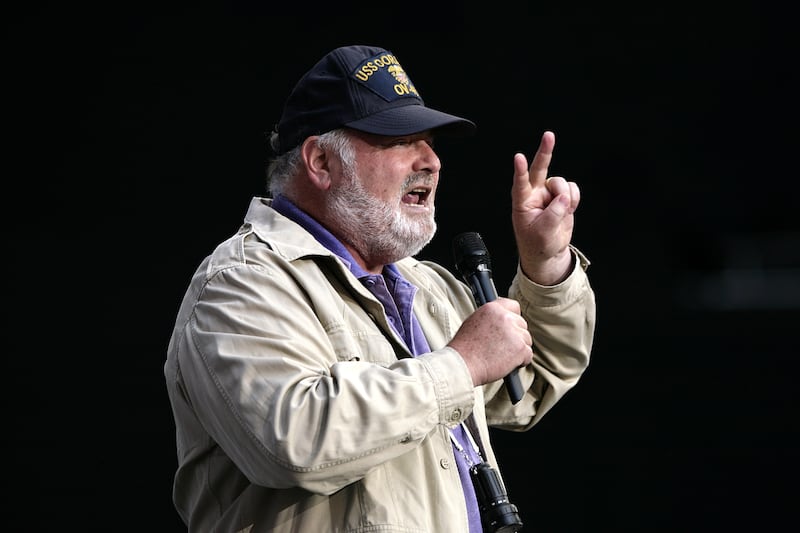Cows are boring creatures, preferring the same food every day, mixed in the same way. The secret to feeding them, however, is far from simple, says Gerard Keenan, as he sits in a London hotel just off Whitehall.
His family company, which is now called Keenan Systems, was started by his father Richard in Borris, Co Carlow, in the late 1970s. At the age of 60, he had decided to bring long-held ideas for efficient farm machinery to life.
Today, the company's products can be found on farms from the UK to Saudi Arabia.
However, the future is in knowledge, not just equipment as is illustrated by the Carlow company's latest deal in China.
This week, Keenan Systems will display its operations in Kilkenny to the international farming media. The company’s staff – “all master’s in agriculture or PhDs” – monitor feeding systems in more than 3,000 farms around the world minute-by-minute.
The system won the agri-food category for Keenan Systems in this year's Irish Times InterTradeIreland Innovation awards.
“In one way, we are not feeding the cow. We are feeding the rumen – one of the animal’s four stomachs – in the cow. Most particularly, we are feeding the bugs. You are allowing greater access to the bugs to the food,” says Keenan, with the passion of one who lives and breathes his subject.
“First and foremost, we bring a consistency. It is like beer-making, a fermentation process. First, the beer-maker has ingredients. If they do things in the same way then they get a consistent product. The same goes for us,” he says.
Balance is everything. “I can tell you what we don’t want. What we don’t want is an acidic rumen. You get that from an imbalance in the ingredients. The bugs can overdose on concentrates, on grains. It is a bit like over-eating chocolate.
“If they eat too much of finely-ground concentrates that will lead to an over-acidic fermentation that will kill the bugs. What we are trying to do is increase the bug population and improve the digestion,” he says.
Results
Getting the recipe right in the feeding pens brings results: 10 per cent more milk produced, 10 per cent less food needed; a roughly similar reduction in the amount of methane coming from each cow; lower nitrogen emissions.
Next month, Keenan Systems and University College Dublin will unveil the China/Ireland Dairy Science and Technology Centre in Beijing, in partnership with the Chinese Academy of Agricultural Sciences. “It’s a unique partnership, nothing like it,” he says.
The key objectives for the partnership are clear. “One thousand more litres per cow per annum without more concentrates and one more lactation. There is a health target here too. We want the cows to live longer.”
Up to now, US and European feed-machinery companies have sold products that increase the amount of food the cow ate in the drive for greater yields. The Chinese, he says, quickly understood that Keenan’s approach was different.
In recent years, Keenan Systems built up “the biggest database in the world, 11,000 farms in 25 countries with 1 million cows”. So far, 3,000 of them have migrated onto the company real-time monitoring systems.
The difference in production between the best farms and the average was 40 per cent, he says, but the introduction of the company’s systems increased yields by 10 per cent in the first year and narrowed the gaps every year thereafter.
Detail is central to success. Forage – grass or silage – must be of a certain length, preferably “two-to-three inches”, but not longer than that to ensure that it stays in the stomach for just the right amount of time, no shorter, no longer.
“If the forage is too long it may well stay too long in the stomach,” he says.
“We are balancing forage and concentrates in a way that the bugs can’t separate. We want them to eat both. We are really trying to get them to eat forage in a better way and digest it properly,” he says.
Methane emissions – an element of agricultural countries’ influence on climate change emissions – fall proportionally in line as more efficient production rises, he says. “It happens with nitrogen levels, as well. Feed doesn’t disappear; it either goes into good product, or bad product.”
In Keenan’s world, straw is a valuable feedstuff. “Straw has not been seen as a valuable feed. We utilise it very strongly. Straw is fundamentally important. It is a waste product that can be turned into a useful one.
“China imports huge quantities of feed from Australia and the US and yet it burns massive quantities of straw in northern China, which contributes to their pollution problems.”
Mixed properly with forage, straw becomes highly useful, perhaps making up half of the cow’s feed. “That is a breakthrough way of feeding, particularly for a dry cow. It helps her get through the calving period.”
And it cuts the number of animal deaths, helping to keep the cow healthy in the months after calving, which is the most dangerous time. “Most problems that lead to culling happen within three months of calving” Keenan says.
China links
Links with the Chinese have been developed slowly over the past five years. “We could see a huge need and, in theory, a huge opportunity. What was more difficult was to see how to capitalise on it, how to convert it.”
Since 1978, Chinese milk production has soared from 1 million tonnes to 38 million tonnes last year. “They have achieved an enormous amount. It is incredible what they have done. But they know that this is not sufficient.
“They have a huge number of cows, they’ve put in a lot of technology but it is not doing enough. They know that is unsustainable. They have a finite amount of land that is needed for lots of different needs.”
The pressures that are becoming evident in China are seen elsewhere too. Milk prices for farmers in the State have fallen to 27c a litre. Global prices have seen “huge peaks and troughs” over the past seven years, he says.
"We are probably still going through a cycle of thinking that we have surplus farmers or that there are farmers willing to make up for those exiting. I think we are going to run out of road for that in Europe, " he says.
Dairy farmers in all but one of Germany’s states are losing money. The same is happening in the UK. Losses are making people cautious, just when innovation is the one thing that could save many of them. “Asian countries have a much keener understanding of feed security than anyone else in the world,” says Keenan, who spends much of his time travelling the continent. “They are much more likely to make leap-frogs in terms of efficiency.”
The systems designed by Keenan are not simply for larger farmers. “Most of our new customers would have 60 dairy cows, producing 300,000 litres of milk. The average dairy farmer in Ireland has just below a 300,000 quota.”
The island of Ireland has 1.3 million cows. In the Republic, most graze on grass. In Northern Ireland, more of them are housed for longer periods than down south. An increase of 1,000 litres per cow per year can be achieved, he says.
In India, the majority of milk production comes from farmers with much smaller herds. There, Keenan is talking to a €6 billion-a-year diary company that takes milk from hundreds of thousands of farmers, but wants them to produce more and more efficiently.
Few have any machinery. Fifteen years ago, the company installed 15,000 internet kiosks to help train the largely illiterate farmers. “That company has been dealing with some of those farming families for over 100 years,” he says.
“It realises that it needs a consistent product if it is to sell consistently,” says Keenan. “The relationships in Ireland, or anywhere else in Europe are not as deep as this. Genuine need helps to create that better relationship.”



















